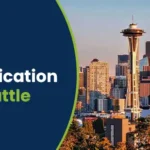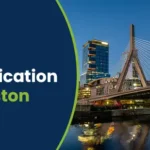In clinical practice, Narrow Complex Tachycardia often presents with unusual challenges. Therefore it is important for healthcare providers to understand these nuances better to ensure that patients are treated with efficacy and precision.
This blog will help you understand the key points of Narrow Complex Tachycardia as a fatal cardiac disorder along with diagnostic approaches and evidence based treatment.
To diagnose Narrow QRS Tachycardia, it is important to conduct a careful analysis of the patient’s medical history and ECG reports.
Understanding the diverse strategies of Narrow QRS Tachycardia will help establish a more effective standard of care for cardiac arrhythmias. Let’s go through the key points of management of Narrow QRS Tachycardia-
Master ACLS Now
Get ACLS certified with confidence
What is Narrow Complex Tachycardia?
Narrow Complex Tachycardia is a cardiac disorder that is diagnosed by rapid heart rhythm. It originates from the atria or the atrioventricular junction. This condition includes various types of arrhythmias like atrial fibrillation, atrial flutter, and supraventricular tachycardia. Symptoms include palpitation, chest discomfort, dizziness and fatigue. Early recognition and management is crucial.
Read More: Get the ACLS Certification Guide to Stroke Management.
Which types of arrhythmias are narrow-complex tachyarrhythmias?
Narrow complex tachyarrhythmias present as narrow QRS tachycardia on an electrocardiogram (ECG). These arrhythmias showcase certain symptoms in common like palpitation, chest comfort and dizziness. Treatment options vary depending on the kind of arrhythmia.
Read More: 10 Medical Emergencies that need ACLS for adults
What are the treatment options to Narrow QRS Tachycardia?
The choice of treating Narrow QRS Tachycardia depends on several factors like a patient’s clinical condition and their underlying physical issue. Here are some of the few common approaches-
- Vagal maneuvers: These are simple techniques that stimulate the vagus nerve to slow down the heart rate. Examples include bearing down as if having a bowel movement, coughing forcefully, or immersing the face in ice-cold water. Vagal maneuvers are often attempted first for certain types of narrow QRS tachycardia, such as supraventricular tachycardia (SVT).
- Adenosine: Adenosine is a medication that can rapidly terminate SVT by blocking conduction through the atrioventricular (AV) node. It is administered intravenously under medical supervision and can cause a temporary feeling of flushing, shortness of breath, or chest discomfort.
- Calcium channel blockers: Medications such as verapamil or diltiazem can be used to slow the heart rate and terminate episodes of SVT. These drugs work by blocking calcium channels in the heart, leading to decreased conduction through the AV node.
- Beta-blockers: Drugs like metoprolol or esmolol may be used to slow the heart rate and control symptoms in patients with narrow QRS tachycardia. Beta-blockers reduce the effects of adrenaline on the heart and can help prevent episodes of SVT.
- Electrical cardioversion: In cases where vagal maneuvers and medications are ineffective or contraindicated, synchronized electrical cardioversion may be performed. This involves delivering a controlled electrical shock to the heart to restore normal rhythm.
(Vagal Maneuver)
- Catheter ablation: For patients with recurrent or refractory narrow QRS tachycardia, catheter ablation may be recommended. This procedure involves threading a catheter through blood vessels to the heart and delivering energy (such as radiofrequency or cryoablation) to destroy abnormal electrical pathways responsible for the tachycardia.
- Medications to manage underlying conditions: If the narrow QRS tachycardia is secondary to another medical condition (such as hyperthyroidism), treating the underlying cause may help alleviate the tachycardia.
Read More: Know the psychological aspect of patient care in ACLS
What are the common challenges faced while treating Narrow QRS Tachycardia?
Treating narrow QRS tachycardia, particularly supraventricular tachycardia (SVT), comes with its set of challenges. While many cases can be effectively managed with conservative measures, certain situations may pose difficulties. Here are some common challenges faced during the treatment of narrow QRS tachycardia:
- Identifying the specific arrhythmia mechanism can be tricky due to subtle ECG findings.
- Differentiating narrow QRS tachycardia from wide complex tachycardia is essential but can be challenging.
- Selecting the optimal treatment approach considering hemodynamic stability and comorbidities is complex.
- Managing recurrent or refractory cases may require exploring alternative treatments like catheter ablation.
- Addressing associated symptoms and comorbidities adds complexity to the treatment process.
How can an ACLS course help in the management of Narrow QRS Tachycardia?
An Advanced Cardiovascular Life Support (ACLS) course provides healthcare professionals with the knowledge and skills necessary to manage various cardiac emergencies.This includes narrow QRS tachycardia. Here’s how an ACLS course can aid in the management of narrow QRS tachycardia:
- Recognition and diagnosis: ACLS training teaches healthcare providers to recognize the signs and symptoms of narrow QRS tachycardia. This enables prompt diagnosis and differentiation from other types of tachyarrhythmias.
- Understanding of algorithms: ACLS guidelines include specific algorithms for managing various cardiac rhythms, including narrow complex tachycardia. Participants learn these algorithms, which provide step-by-step instructions for treatment based on the patient’s clinical presentation.
- Proficiency in pharmacological interventions: ACLS courses cover the use of medications commonly employed in the management of narrow QRS tachycardia, such as adenosine, calcium channel blockers, and beta-blockers. Participants learn about dosages, administration routes, and potential adverse effects to ensure safe and effective drug delivery.
- Competence in performing synchronized cardioversion: ACLS training includes instruction on performing synchronized cardioversion, a technique used to convert certain types of stable narrow QRS tachycardia back to normal sinus rhythm. Healthcare providers learn about appropriate energy levels, electrode placement, and patient preparation for this procedure.
- Emphasis on teamwork and communication: ACLS courses stress the importance of effective teamwork and communication during cardiac emergencies. Participants learn how to coordinate roles and responsibilities, communicate clearly and efficiently, and provide seamless care to patients with narrow QRS tachycardia.
- Integration of ACLS protocols into clinical practice: By completing an ACLS course, healthcare providers gain the confidence and competence to apply ACLS protocols in real-life scenarios involving narrow QRS tachycardia. This integration ensures timely and appropriate management, leading to improved patient outcomes.
Conclusion
In conclusion, treating narrow complex tachycardia demands a multifaceted approach. It requires accurate diagnosis, prompt intervention, and individualized management strategies. Through a combination of non-invasive techniques, pharmacological interventions, and, in some cases, invasive procedures.
However, there are several challenges such as accurate arrhythmia identification, differentiation from wide complex tachycardia, and management of recurrent cases. If you are a healthcare professional looking to be able to provide confident and competent care for patients of Narrow QRS Tachycardia, sign up for an ACLS (Advanced Cardiovascular Life Support) today!







